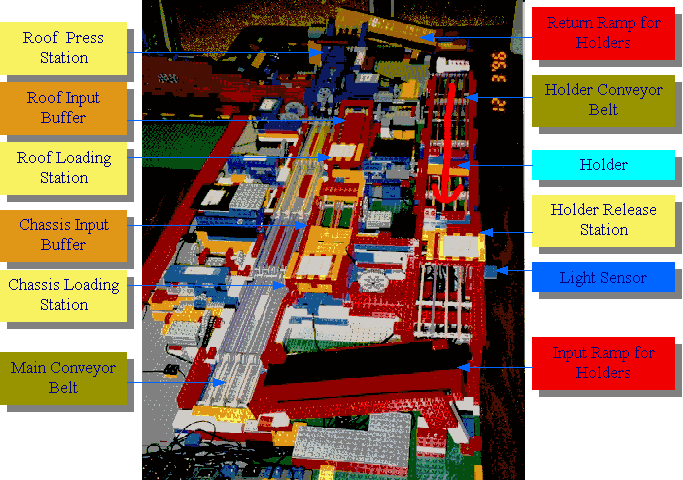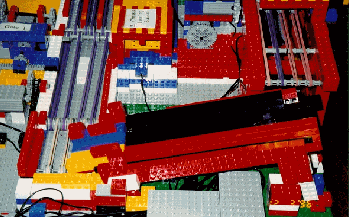|
|
|
|
|
|
|
|
|
|
|
|
|
|
|
|
|
|
|
|
|
|
|
|
|
|
|
|
|
|
STEP 1: ACQUIRING EMPTY HOLDERS
|
|
|
|
|
|
|
|
|
|
|
|
|
The production process starts by introducing an empty Holder from the Holder Conveyor Belt into the Main Conveyor Belt (See Figure 1).
|
|
|
|
|
|
|

|
|
|
|
|
|
|
|
Figure 1: First Part of the Factory
|
|
|
|
|
|
|
|
|
|
|
|
Holder Conveyor Belt is used for transfering empty Holders to the Holder Release Station. It also serves as a buffer for empty Holders.
Light sensor at the Holder Release Station detects the presence of a Holder at that station.
Holder Release Station controls the number of Holders allowed into the production line by means of a 'gating` system (to be discussed later).
|
|
|
|
|
|
|
|

|
|
|
|
|
|
|
|
Figure 2: Holder sliding down the Input Ramp
|
|
|
|
|
|
|
|
|
|
|
|
Holder Conveyor Belt brings an empty Holder to the Input Ramp, where it freely slides down onto the Main Conveyor Belt (see Figure 2).
|
|
|
|
|
|
|
|
|
|

|
|
|
|

|
|
|
|
|
|
|
|
|
|

